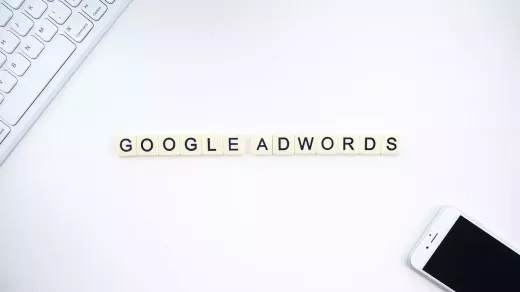What is ROI and why is it important?
Return on investment (ROI) is a measure of the profitability of an investment. It measures the amount of return on an investment in relation to the investment's cost. ROI is a critical metric to understand how effective your in-app advertising campaigns are. By measuring the ROI, you can calculate the amount of revenue generated from your advertising campaigns and compare it to the cost of the campaign. This helps you understand how effective your advertising campaigns are and whether they are profitable or not.
Understanding the ROI of in-app advertising campaigns can help you make informed decisions about where to allocate your advertising budget. Knowing which campaigns generate the most revenue for your business can help you optimize your advertising efforts and maximize your ROI. By focusing on high-ROI campaigns, you can increase your revenue and reduce your advertising costs.
Calculating the ROI of your in-app advertising campaigns is essential to determine the effectiveness of your advertising strategy. Let's explore the different methods for calculating the ROI of your in-app advertising campaigns.
Calculating ROI for in-app advertising campaigns
Calculating the ROI of your in-app advertising campaigns involves measuring the revenue generated by the campaign and comparing it to the cost of the campaign. There are different methods for calculating the ROI of your in-app advertising campaigns, and the method you choose will depend on your advertising goals and the data available to you.
One method for calculating ROI is to track conversions. A conversion is a specific action that a user takes after clicking on your ad, such as downloading an app or making a purchase. By tracking conversions, you can measure the revenue generated by your advertising campaigns and compare it to the cost of the campaign. To calculate ROI using this method, you would divide the revenue generated by the campaign by the cost of the campaign.
Another method for calculating ROI is to measure the lifetime value (LTV) of your customers. LTV is the total revenue generated by a customer over their entire lifetime with your business. By calculating the LTV of your customers, you can determine the long-term profitability of your advertising campaigns. To calculate ROI using this method, you would divide the LTV of your customers by the cost of the campaign.
A third method for calculating ROI is to calculate the cost per acquisition (CPA). CPA is the cost of acquiring a single customer through your advertising campaign. By calculating the CPA of your advertising campaigns, you can determine how much it costs to acquire a customer and compare it to the revenue generated by that customer. To calculate ROI using this method, you would subtract the CPA from the revenue generated by the customer and divide the result by the cost of the campaign.
Factors that affect ROI in in-app advertising
Several factors can affect the ROI of your in-app advertising campaigns. Understanding these factors can help you optimize your campaigns for maximum ROI.
One factor that can affect ROI is the targeting of your ads. If your ads are not targeting the right audience, they may not generate enough revenue to offset the cost of the campaign. Targeting your ads to the right audience can increase the likelihood of conversions and improve the ROI of your campaigns.
Another factor that can affect ROI is the design of your ads. If your ads are not visually appealing or don't have a clear call-to-action, they may not generate enough conversions to offset the cost of the campaign. Designing ads that are visually appealing and have a clear call-to-action can improve the ROI of your campaigns.
The timing of your ads can also affect the ROI of your campaigns. If your ads are not timed correctly, they may not generate enough revenue to offset the cost of the campaign. Timing your ads to coincide with peak user activity can increase the likelihood of conversions and improve the ROI of your campaigns.
Best practices for optimizing ROI in in-app advertising
Optimizing the ROI of your in-app advertising campaigns requires careful planning and execution. Here are some best practices for optimizing the ROI of your campaigns:
1. Set clear advertising goals: Before launching your campaign, set clear goals for what you want to achieve. This will help you measure the success of your campaign and optimize it for maximum ROI.
2. Target the right audience: Ensure that your ads are targeting the right audience. This will increase the likelihood of conversions and improve the ROI of your campaigns.
3. Design visually appealing ads: Design ads that are visually appealing and have a clear call-to-action. This will increase the likelihood of conversions and improve the ROI of your campaigns.
4. Time your ads correctly: Time your ads to coincide with peak user activity. This will increase the likelihood of conversions and improve the ROI of your campaigns.
5. Monitor and optimize your campaigns: Monitor your campaigns regularly and make adjustments as needed to optimize your ROI.
By following these best practices, you can optimize the ROI of your in-app advertising campaigns and achieve maximum profitability.
Tools for measuring ROI in in-app advertising
Several tools are available to help you measure the ROI of your in-app advertising campaigns. These tools can help you track conversions, calculate CPA, and measure LTV. Here are some popular tools for measuring ROI in in-app advertising:
1. Google Analytics: Google Analytics is a free tool that can track conversions and calculate CPA for your advertising campaigns.
2. AppsFlyer: AppsFlyer is a mobile attribution and marketing analytics platform that can track conversions, calculate CPA, and measure LTV for your in-app advertising campaigns.
3. Adjust: Adjust is a mobile measurement and fraud prevention platform that can track conversions, calculate CPA, and measure LTV for your in-app advertising campaigns.
By using these tools, you can measure the ROI of your in-app advertising campaigns and make informed decisions about your advertising strategy.
Case studies of successful in-app advertising campaigns with high ROI
Several businesses have achieved high ROI through their in-app advertising campaigns. Let's look at some case studies:
1. Uber: Uber used in-app advertising to promote its ride-sharing service to potential customers. By targeting the right audience and using visually appealing ads, Uber achieved an ROI of 300%.
2. Airbnb: Airbnb used in-app advertising to promote its vacation rental service to potential customers. By targeting the right audience and using personalized ads, Airbnb achieved an ROI of 500%.
3. Amazon: Amazon used in-app advertising to promote its shopping app to potential customers. By targeting the right audience and using relevant ads, Amazon achieved an ROI of 200%.
By studying these case studies, you can learn from successful businesses and optimize your in-app advertising campaigns for maximum ROI.
Common mistakes to avoid when evaluating ROI in in-app advertising
When evaluating the ROI of your in-app advertising campaigns, it's essential to avoid common mistakes. Here are some mistakes to avoid:
1. Focusing only on short-term ROI: Focusing only on short-term ROI can lead to missed opportunities for long-term profitability. It's important to consider the lifetime value of your customers when evaluating the ROI of your campaigns.
2. Not tracking conversions: Not tracking conversions can make it difficult to measure the success of your advertising campaigns. It's important to track conversions to understand the revenue generated by your campaigns.
3. Not targeting the right audience: Not targeting the right audience can lead to low conversion rates and low ROI. It's important to target the right audience to increase the likelihood of conversions.
By avoiding these mistakes, you can ensure that you're evaluating the ROI of your in-app advertising campaigns accurately.
Future trends and predictions for in-app advertising ROI
The future of in-app advertising is promising, with continued growth and innovation in the industry. As more businesses adopt in-app advertising, there will be an increased focus on optimizing ROI through advanced targeting and personalized advertising. Additionally, the use of artificial intelligence and machine learning will continue to drive innovation in the industry.










